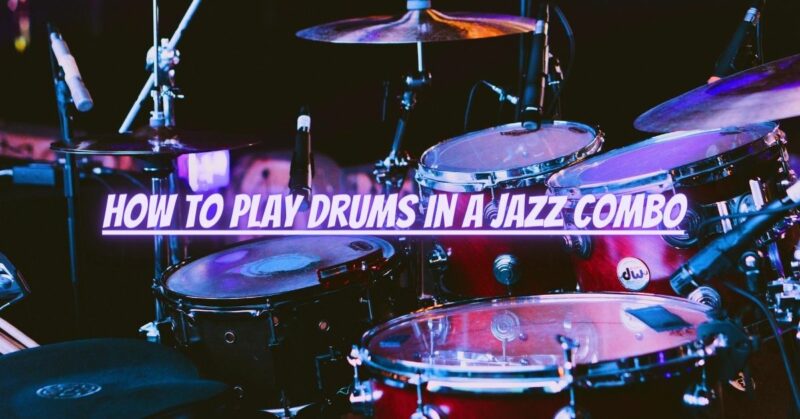Playing drums in a jazz combo is a unique and rewarding experience that requires a solid understanding of jazz rhythms, sensitivity to dynamics, and the ability to interact with other musicians. As the heartbeat of the band, the drummer sets the foundation for the groove, improvisation, and collective musical conversation. In this article, we will explore essential techniques and approaches to help you play drums in a jazz combo with confidence, musicality, and a true sense of swing.
- Develop a Strong Sense of Time: In jazz, maintaining a steady and precise sense of time is crucial. Practice with a metronome or play along with recordings to develop your internal clock. Focus on subdivisions such as quarter notes, eighth notes, and triplets, ensuring that each note falls exactly where it should. Pay attention to your ride cymbal pattern, which acts as the main timekeeper, and aim for a consistent, even pulse. As you become comfortable, experiment with different tempos and syncopated rhythms to expand your rhythmic vocabulary.
- Master Basic Jazz Grooves: Familiarize yourself with the foundational jazz grooves that form the backbone of the music. Start by practicing the classic ride cymbal pattern, which emphasizes the quarter note on the ride cymbal while playing the hi-hat on beats two and four. Experiment with variations, such as using different parts of the cymbal or adding accents, to add depth and creativity to your playing. Additionally, practice playing the “comping” or accompanying patterns on the snare drum and bass drum, supporting the soloists and adding rhythmic texture to the music.
- Listen and Interact: Jazz is a collaborative and interactive art form, and listening to your fellow musicians is essential. Pay close attention to the melody, harmonic progression, and improvisation happening around you. Anticipate musical cues and respond dynamically. Use eye contact, nods, and subtle gestures to communicate with the other members of the combo, indicating the direction of the music or signaling breaks and transitions. Actively listen to the soloists, adjusting your playing to support and enhance their improvisations.
- Embrace Dynamics: Dynamics play a crucial role in jazz, adding depth, nuance, and excitement to the music. Experiment with different volumes and intensities, ranging from soft brushwork to explosive accents. Learn to control your volume by utilizing various techniques, such as feathering the bass drum or using lighter touches on the cymbals. This dynamic range allows for expressive and interactive drumming that supports the dynamics of the entire band.
- Study Jazz Styles and Drummers: Immerse yourself in the rich tradition of jazz drumming by studying the styles and techniques of influential jazz drummers. Listen to recordings by masters such as Art Blakey, Elvin Jones, and Tony Williams, observing their approach to timekeeping, grooves, and improvisation. Study their use of different cymbals, drum fills, and comping patterns. Transcribe their solos and incorporate their ideas into your own playing. This research will deepen your understanding of jazz drumming and inspire new approaches to your drumming style.
- Be Open to Improvisation: Jazz is a genre that encourages improvisation and spontaneity. As a drummer, embrace the opportunity to take solos and contribute to the musical conversation. Develop your vocabulary of drum fills, exploring different rhythmic patterns and textures. Learn to seamlessly transition between soloing and accompanying, ensuring a smooth and coherent musical flow. Practice trading fours or eights with other members of the band, developing your improvisational skills and building musical rapport.
Conclusion: Playing drums in a jazz combo requires a strong sense of time, a solid grasp of jazz grooves, attentive listening skills, and a willingness to embrace dynamics and improvisation. By developing a precise sense of time, mastering basic jazz grooves, actively listening and interacting with your fellow musicians, embracing dynamics, studying jazz styles and drummers, and being open to improvisation, you can excel as a jazz combo drummer. Remember to practice regularly, play with recordings and live musicians, and always strive for musicality, sensitivity, and an unwavering sense of swing. With dedication and passion, you’ll find yourself seamlessly blending into the rhythm section, propelling the music forward, and creating magical moments of jazz improvisation in a combo setting.


